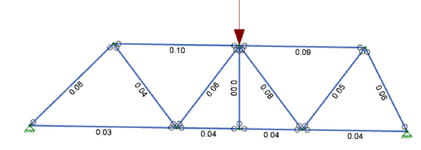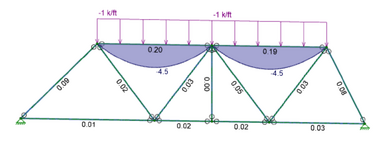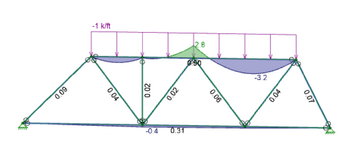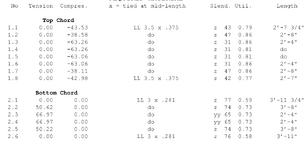SeizeTheMoment
Structural
- Sep 16, 2020
- 36
The joist calcs I have usually reviewed from manufs usually only include axial loads in their member forces. I haven't seen a calc that shows how moment along the chords are considered.
This leads me to think of a couple ways of analyzing a joist:
1) Case 1: Everything is pinned, and every load is a point load only at the panel points. This is my best interpretation of how there would only be axial forces in the joist members, but I don't believe this is a real life scenario.

2) Case 2: Everything is still pinned, and loads are applied as a distributed load. This would include moment at least for the top chord in a gravity loading. Unless there are purlins that are connected to the panel points, I feel like this is the case for most scenarios.

3) Case 3: Chords are continuous, there are moments on the chord at panel points. I think (?) this is how it would realstically behave, but I know this is stepping away from how truss stresses resolve and more into beam theory...

My understanding is that joist calcs usually only consider pure axial loads in joist members, leading me to believe they consider Case 1. I think there's a gap in my understanding with how the chords are actually considered at panel points (whether continuous, or pinned), and how loads are applied.
Let me know your thoughts, thanks!
This leads me to think of a couple ways of analyzing a joist:
1) Case 1: Everything is pinned, and every load is a point load only at the panel points. This is my best interpretation of how there would only be axial forces in the joist members, but I don't believe this is a real life scenario.

2) Case 2: Everything is still pinned, and loads are applied as a distributed load. This would include moment at least for the top chord in a gravity loading. Unless there are purlins that are connected to the panel points, I feel like this is the case for most scenarios.

3) Case 3: Chords are continuous, there are moments on the chord at panel points. I think (?) this is how it would realstically behave, but I know this is stepping away from how truss stresses resolve and more into beam theory...

My understanding is that joist calcs usually only consider pure axial loads in joist members, leading me to believe they consider Case 1. I think there's a gap in my understanding with how the chords are actually considered at panel points (whether continuous, or pinned), and how loads are applied.
Let me know your thoughts, thanks!

